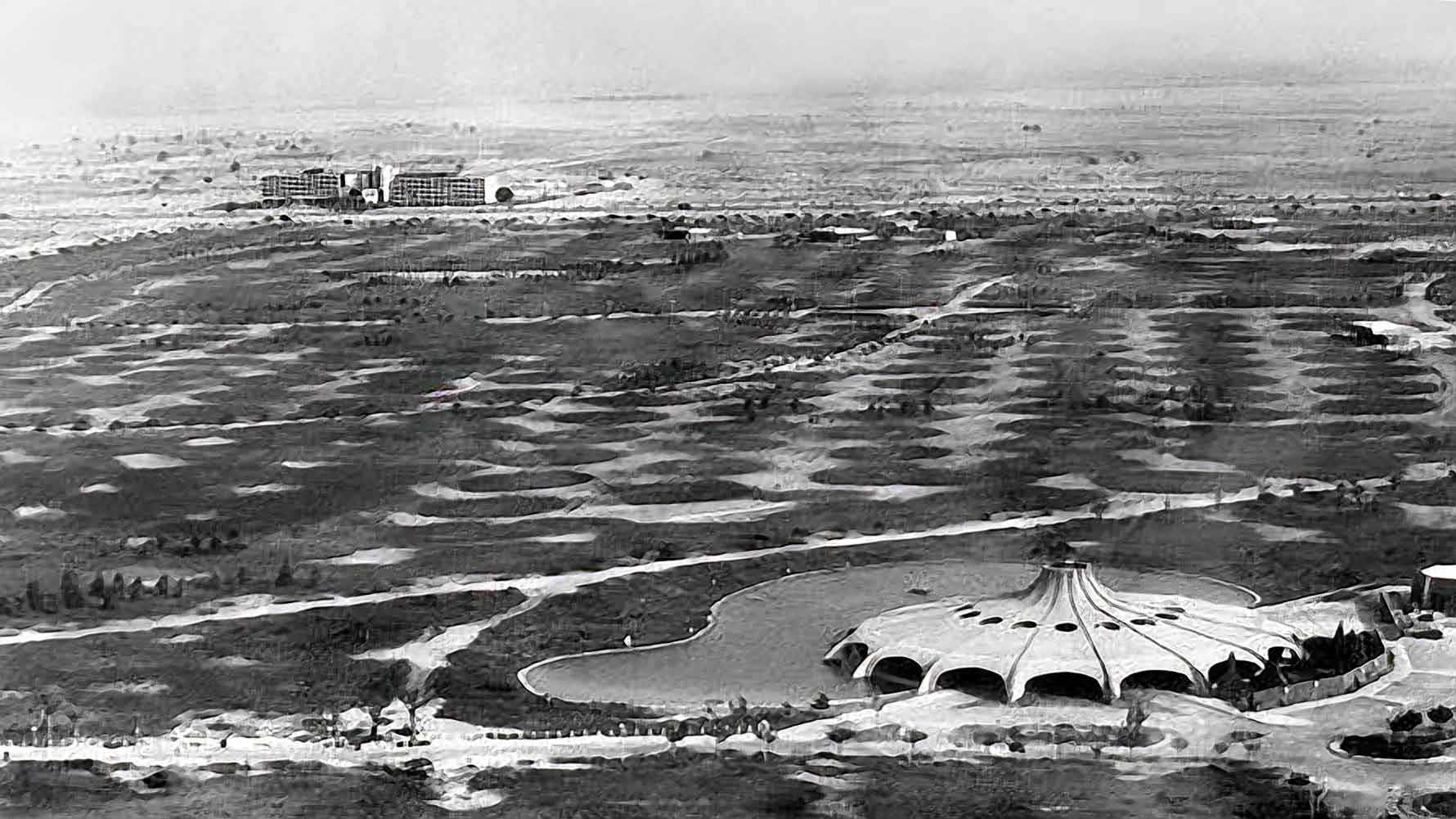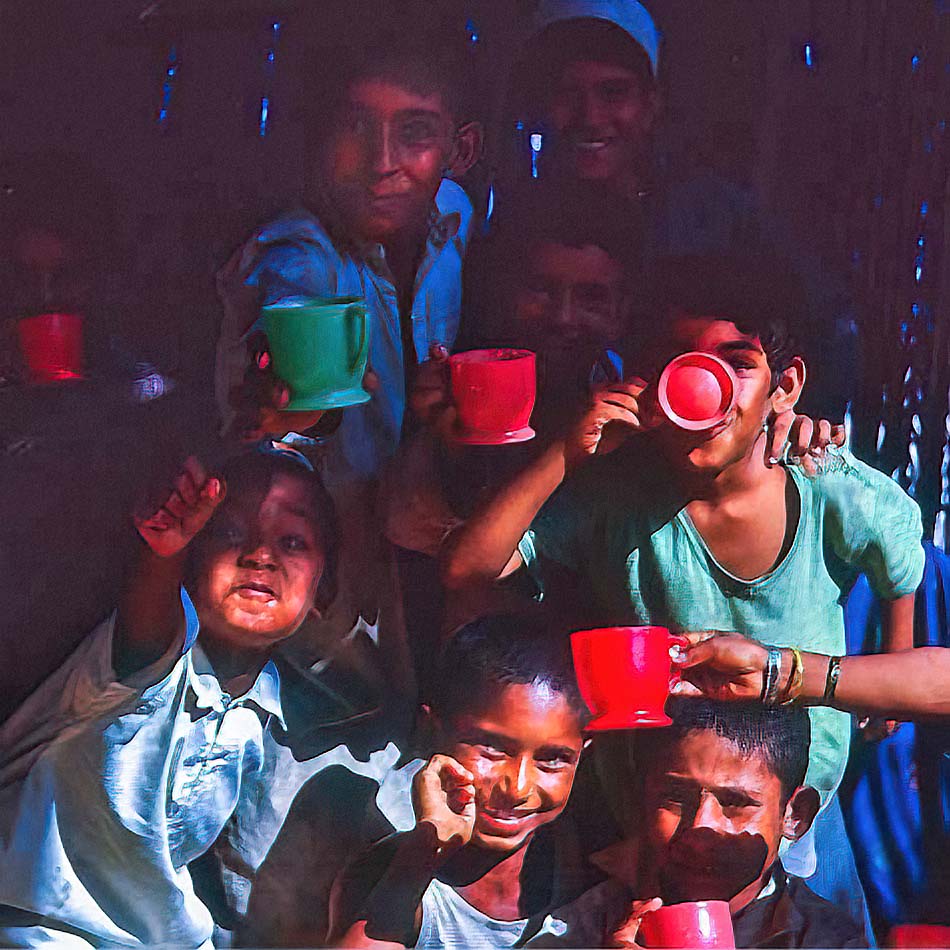
Safa Park was a unique Green Space
It offered grass and trees but not much else
People preferred to run or walk around the outside of Safa Park's Perimeter rather than inside!
Safa Park underwent further development between 1984 and 1992

Source Unknown
A Home for Illegal Immigrants 1960s-70s
Today Safa Park is surrounded by Luxury Living
In 1960s and 70s this same area was home to Illegal Immigrants living in poverty
Today Residents of the area enjoy all the amenities Dubai has to offer
Back in 1960 and 70s Residents lived without power, running water, sewerage, medical services and food for their under nourished children
They had no rights whatsoever.
They had to find a new place to live when Safa Park was built.

Image by Iain Masterton / Getty Images
Prior to 1970s Dubai relied on Illegal Immigrants for its workforce. They mostly came from India, Pakistan and Sri Lanka. Typically they borrowed money to purchase a passage by Dhow to Dubai in the hope of finding work. Paid work was needed to repay the loan and support their family back home.
Dhows carrying these illegal immigrants usually headed for Ras Al Khaimah or somewhere on the coastline between RAK and Dubai.
These Dhow Captains risked imprisonment if caught. Sometimes landed their human cargo onto offshore sandbanks, usually at night, where Immigrants risked being trapped by rising tide and drowned. Those that made it ashore may or may not have had someone ready to help them. "Help" meant finding sponsorship by a local person for a Work Visa.

Illegal Immigration Village
In 1970s, local people had the right to sponsor foreigners for Work Visas.
An "illegal" immigrant could became "legal" by being sponsored by a local person and obtain a work visa - at a price. These Work Visas specified an occupation such as gardener or labourer but did not provide an actual job.
Being made "legal" did not equate to being employed. With loans to repay these now "legalised" illegal immigrants had to find paid work. Most made their way to Dubai to work illegally (i.e. they no longer complied with the Job or Employer specified on their Visa) or search for a Job with a new Sponsor.
This involved paying off their local Sponsor to get release from the original Visa then finding a new Sponsor to apply for a new Work Visa. This meant a continuing spiral of paying and borrowing money.
Living cheaply became a necessity. Illegal "Plywood Cities" developed illegally around Dubai to house these "illegal" and sometimes legal immigrants. Made from scrap wood and materials gathered from around the town, these Plywood Cities became self contained Communities and home to thousands.
One of these "Plywood Cities" developed where Safa Park is located today. In the late 1960s this area was desert and considered "outside" Dubai.
Where did their Materials come from?
Back then ships used timber to hold their cargoes in place.
As the cargoes were discharged, that timber was dumped on the quayside leaving the Port Authorities to dispose of the timber.We moved this timber to outside the Port Rashid's gates for collection by Municipality next day. All the timber would be gone before Municipality could collect it.
That became our routine way for disposing of waste timberLen Chapman
Dubai's Government tolerated these "plywood cities" because Dubai depended on "Illegals" for its workforce. These "Cities" were "out of sight, out of mind" but essential to labour supply.
In 1970s Dubai's Government publicly declared Illegal Immigrants would be deported but the threat was not carried out. Periodically Dubai Government announced an "Amnesty" whereby "Illegals" applying for the "Amnesty" received an Identify Card enabling them to now legally work in Dubai until some undefined future date. At that date, they could leave legally for their own Country but prohibited from returning.
"Illegals" often kept working until they were ready to return to their home country. Most stayed in Dubai for long periods and acquired some "wealth" before returning home. Others immediately returned to their own Country at Dubai Government's expense.
However these "Illegals" now knew how to enter Dubai illegally, find work and live. Many returned again as Illegal Immigrants with different identities to begin the cycle again.
"Illegal Immigrants" played an important role in Dubai's Development.

© J. Chapman

© J. Chapman
Illegal Immigration was not confined to men. Families and single women also entered Dubai illegally.
"Safa City" was home to Immigrant families and a large number of children. Amenities in the "Plywood City" (also referred to as "Packing Case Cities") were non existent - one or two water standpipes, no electricity or sewage systems. Safa City was an unhealthy place to live.
Immigrants had no access to Dubai's limited medical facilities or services. Children were undernourished. Save the Children Fund established in Dubai in 1960s. They organised Feeding Programmes for these needy children. Women's Guild of the Holy Trinity Church provided Volunteer Expatriate Wives to run a Feeding Schedule.
STCF provided food which these Volunteer Ladies regularly took into Safa City and fed the children.
Children knew the schedule.
They arrived on time with each carrying a bowl to receive their food.Expat Wife recalls
In the mid 1970s, Dubai Municipality decided to build Safa Park
The Illegal Immigrants moved out from Plywood City then Dubai Municipality demolished these temporary and flimsy structures.
Plywood City had been built atop a sand hill. Municipality levelled this hill in preparation for building Safa Park.
The Illegal Immigrants moved to Mumzar to re-establish their City until Municipality decided to build Mumzar Park.